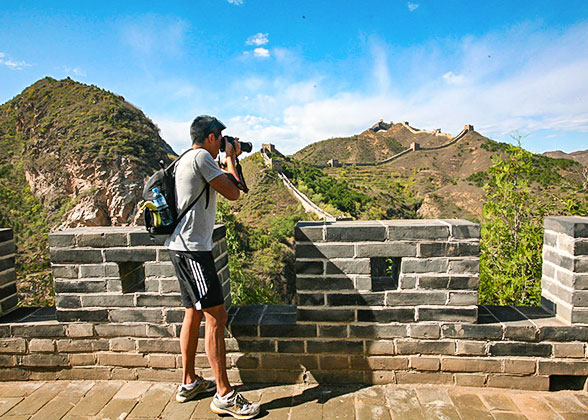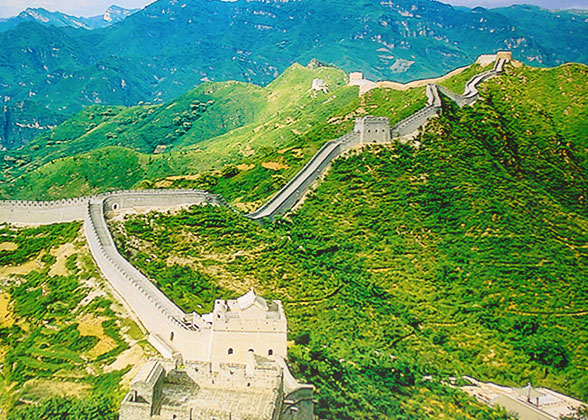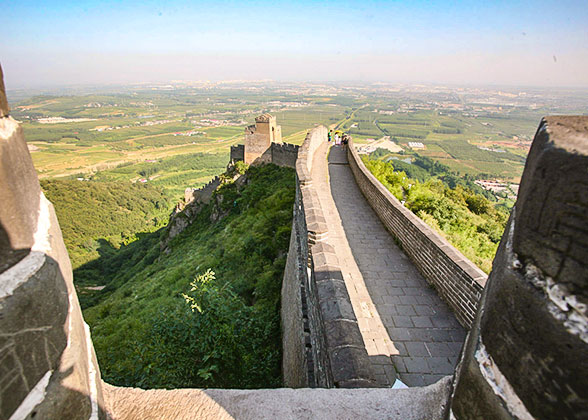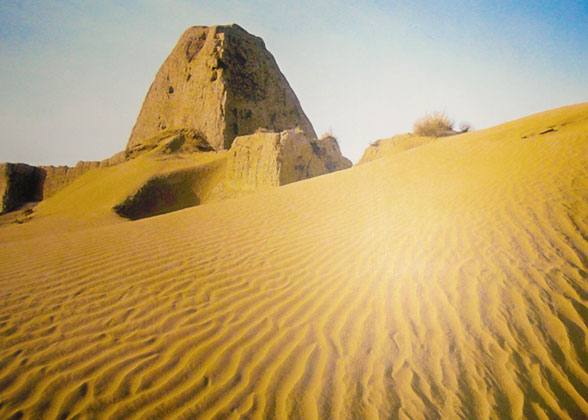Ming Dynasty Great Wall
The China Great Wall of the Ming Dynasty (1368-1644) is the most solid, complete and magnificent wall in Chinese history. It was well-designed, and is known for its unique structure. In its time, it was an effective defense system. Most China Great Wall sections that people see today are from the Ming Dynasty such as those at Badaling, Mutianyu, Jinshanling, and Simatai in Beijing. Many have been developed into popular tourist resorts.
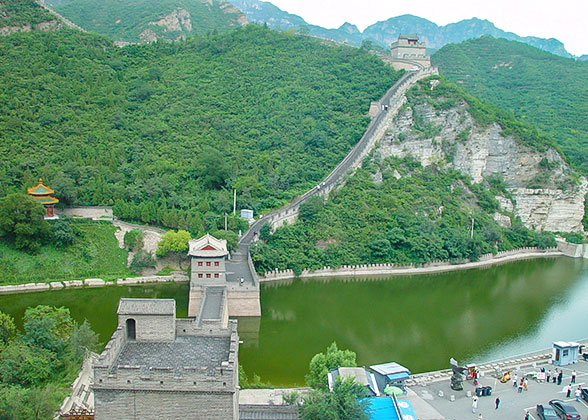 |
| Juyongguan Pass, Beijing |
Facts about the Ming Dynasty Great Wall
![]() It runs from Hushan by the Yalu River in the east to Jiayuguan Pass in the west.
It runs from Hushan by the Yalu River in the east to Jiayuguan Pass in the west.
![]() The defense system consists of the walls, watchtowers, beacon towers, forts, passes, and cities.
The defense system consists of the walls, watchtowers, beacon towers, forts, passes, and cities.
![]() The wall spans 5,500 miles (8,851.8 kilometers) in northern China. The actual wall takes up 3,890 miles (6259.6 kilometers). Trenches account for 223 miles (359.7 kilometers). Natural barriers such as mountains and rivers occupy 1,387 miles (2,232.5 kilometers).
The wall spans 5,500 miles (8,851.8 kilometers) in northern China. The actual wall takes up 3,890 miles (6259.6 kilometers). Trenches account for 223 miles (359.7 kilometers). Natural barriers such as mountains and rivers occupy 1,387 miles (2,232.5 kilometers).
![]() The wall passes through 156 counties in 10 regions, including Liaoning, Hebei, Tianjin, Beijing, Shanxi, Inner Mongolia, Shaanxi, Ningxia, Gansu, and Qinghai.
The wall passes through 156 counties in 10 regions, including Liaoning, Hebei, Tianjin, Beijing, Shanxi, Inner Mongolia, Shaanxi, Ningxia, Gansu, and Qinghai.
![]() The height and width of the wall varies according to the terrain. The wall is relatively low and narrow on mountain ridges and other precarious places. It is high and wide on the plains and at military strongholds.
The height and width of the wall varies according to the terrain. The wall is relatively low and narrow on mountain ridges and other precarious places. It is high and wide on the plains and at military strongholds.
![]() The construction materials were acquired locally, including packed earth, bricks and stones. Stone slabs and blue bricks were used at the most important sections.
The construction materials were acquired locally, including packed earth, bricks and stones. Stone slabs and blue bricks were used at the most important sections.
![]() The Tumu Fortress along the Ming Dynasty Great Wall in Zhangjiakou of Hebei Province was once breached by the northern Mongols, called Tumu Crisis.
The Tumu Fortress along the Ming Dynasty Great Wall in Zhangjiakou of Hebei Province was once breached by the northern Mongols, called Tumu Crisis.
Why Did the Ming Dynasty Build the Great Wall?
The Ming Dynasty was established after overturning the Yuan Dynasty (1271-1368) and driving the Mongols back to the northern grasslands. Nevertheless, the Mongols, who would not take their defeat lying down, often harassed the northern border of the Ming’s territory in central China. During the Ming Dynasty, the Jurchen people of northeast China became powerful and threatened the border security of Ming. Under these critical circumstances, the Ming rulers ordered the Great Wall built to shore up its territory.![]() Related Reading: General Qi Jiguang Renovated the Great Wall in the Northern Frontier
Related Reading: General Qi Jiguang Renovated the Great Wall in the Northern Frontier
|
|
The wall building never stopped during the rule of the Ming Dynasty for over two centuries. The emperors divided the wall into 9 border districts and established 9 garrisons so that the wall was refurbished and managed more effectively. These garrisons were Liaodong, Jizhen, Xuanfu, Datong, Taiyuan, Yulin (Yansui), Ningxia, Guyuan, and Gansu. Later, two more garrisons, at Changzhen and Zhenbao, were added near the capital city, Beijing. By then, there were 11 garrisons along the Ming Dynasty Wall. Some 97,660 military officers and soldiers were stationed at the garrisons. Many famous sections and pass cities were erected at the garrison sites such as Jiumenkou in Liaodong Garrison, Shanhaiguan in Jizhen Garrison, and Jiayuguan in Gansu Garrison.![]() Related Reading: War of Shanhaiguan Pass
Related Reading: War of Shanhaiguan Pass
Relics of Ming Dynasty Great Wall
In general, the Wall of the Ming Dynasty is better-preserved than that of other dynasties. Apart from the 5,500 miles of walls, there are 7,062 enemy towers, 3,357 protruding watchtowers, 5,723 beacon towers, 1,176 fortresses, and many other buildings along the wall.
Today, many sections are exposed to natural erosion and human destruction, such as Jiankou, Gubeikou, and Lupiguan. Other remote sections are in poorer condition, and disappearing gradually. Laws and regulations are needed to properly protect the wall before it is gone forever.
|
|
Most Famous Sections
Many sections and passes have been renovated and developed to tourist attractions, especially those in Beijing, such as Badaling, Mutianyu, and Juyongguan.
